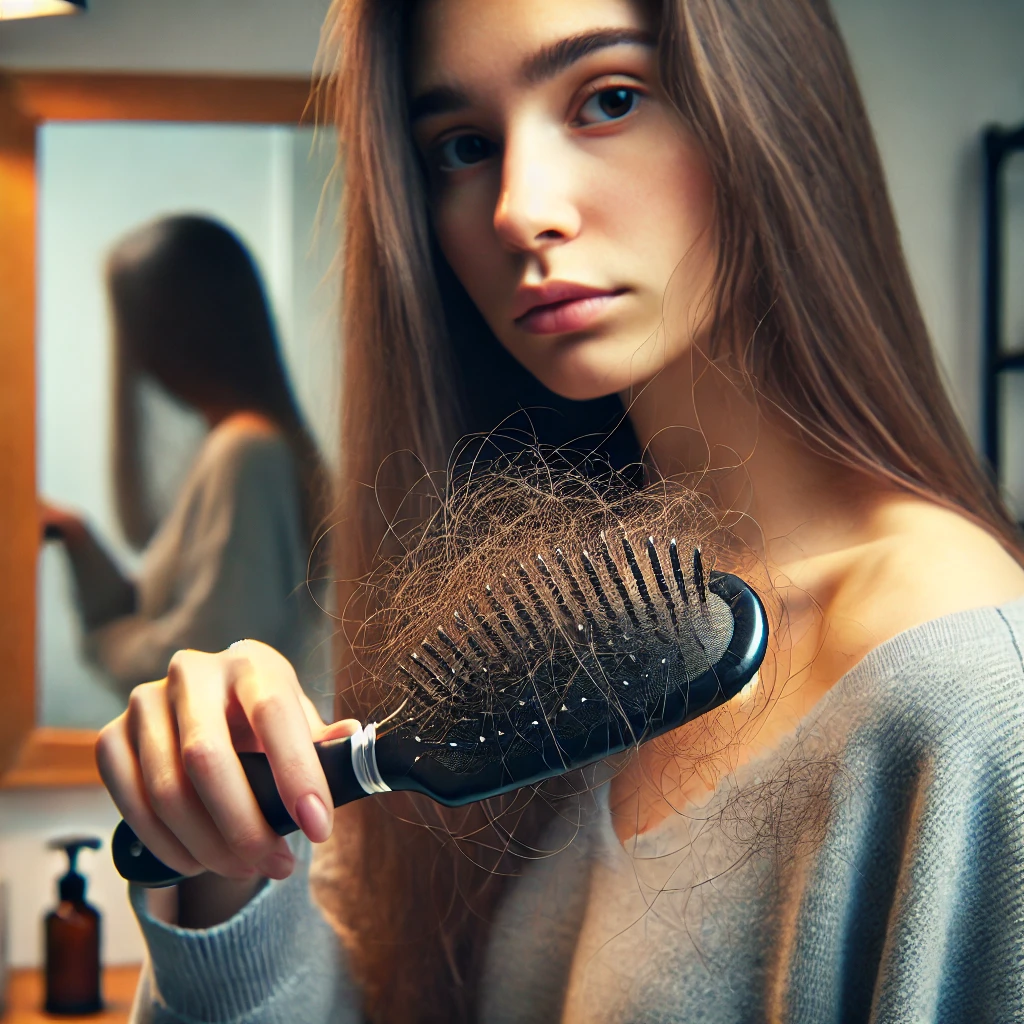My Hair Is Thinning—What Can I Do? 10 Proven Ways to Stop Hair Loss and Restore Healthy Growth

Worried About Thinning Hair? You’re Not Alone—And You’re Not Helpless
Hair thinning can feel alarming—whether you’re noticing extra strands in your brush, a widening part, or scalp areas becoming more visible. It affects both men and women and can start as early as your 20s or 30s.
The good news? Hair thinning is often reversible, especially when caught early and addressed with the right strategy.
In this article, we’ll break down:
- Why your hair may be thinning
- The most common (and overlooked) root causes
- The top 10 proven solutions to help you stop hair loss and stimulate regrowth—naturally and effectively
What Causes Hair Thinning?
Hair loss is usually multifactorial, meaning there’s more than one root cause. Identifying your personal triggers is the first step to lasting improvement.
Common Causes Include:
🧬 1. Genetics (Androgenetic Alopecia)
This is the most common type of hair loss in both men and women and is often referred to as male or female pattern baldness. It’s hormonally driven and influenced by genetics.
🧠 2. Stress and Cortisol Dysregulation
High stress elevates cortisol levels, which can push hair into the shedding phase prematurely (telogen effluvium).
🩺 3. Thyroid Imbalance
Both hypothyroidism and hyperthyroidism can cause hair thinning, especially around the temples and crown.
🧂 4. Nutritional Deficiencies
Low levels of iron, zinc, biotin, protein, or B vitamins can impair hair follicle function and growth.
👩🍼 5. Hormonal Changes
PCOS, perimenopause, postpartum hormone shifts, and birth control pills can disrupt the hormonal balance needed for healthy hair.
💊 6. Medications and Toxins
Certain medications (like antidepressants, blood pressure drugs, or Accutane), environmental toxins, or even mold exposure can affect hair health.
Top 10 Solutions for Thinning Hair
Let’s dive into what you can do—starting today—to slow or reverse hair thinning and stimulate regrowth.
✅ 1. Get Functional Lab Testing
Before starting supplements or treatments, it’s crucial to know what’s driving your hair loss. A functional medicine provider can test for:
- Iron and ferritin levels
- Thyroid hormones (TSH, Free T3, Free T4, Reverse T3)
- DHT (dihydrotestosterone) and testosterone
- Vitamin D, B12, and zinc
- Inflammatory markers and autoimmunity
Personalized treatment starts with the right data.
🧬 2. Balance Hormones Naturally
If DHT is high, consider:
- Saw palmetto (natural DHT blocker)
- DIM (diindolylmethane) to improve estrogen metabolism
- Spearmint tea (shown to lower androgens in women with PCOS)
- Addressing insulin resistance and cortisol imbalances
🍳 3. Improve Your Nutrition
Make sure you’re getting:
- Iron-rich foods: grass-fed beef, lentils, spinach
- Zinc and biotin: pumpkin seeds, eggs, sweet potatoes
- Collagen and protein: bone broth, lean meats, fish
- Omega-3s: wild salmon, walnuts, chia seeds
Aim for 80–100g of protein per day to fuel strong hair growth.
💡 4. Start Red Light Therapy for Hair
Low-level laser therapy (LLLT), especially with red and near-infrared light, improves:
- Blood flow to hair follicles
- ATP production for follicle energy
- Reduction in scalp inflammation
Studies show consistent red light therapy can increase hair count and thickness within 3–6 months.
💉 5. Consider PRF (Platelet-Rich Fibrin) Injections
PRF is a regenerative therapy made from your own blood. It delivers platelets, growth factors, and stem cells to the scalp to:
- Activate dormant hair follicles
- Strengthen existing strands
- Reduce inflammation around hair roots
PRF offers longer-lasting, deeper healing than standard PRP.
🌿 6. Use Medical-Grade Topicals
Look for topicals that contain:
- Minoxidil (for men and women)
- Caffeine or rosemary oil (stimulates follicles)
- Topical finasteride (Rx option for men)
- Copper peptides to support follicle healing
Consistency is key—give it 3–6 months of regular use.
🧘♀️ 7. Reduce Stress and Inflammation
Practice daily stress relief:
- Meditation or deep breathing
- Gentle yoga
- Walking in nature
- Magnesium or adaptogens (ashwagandha, rhodiola)
Lowering cortisol can dramatically reduce stress-induced shedding.
🌡 8. Optimize Scalp Health
A healthy scalp = healthy hair. Try:
- Weekly scalp massage to boost circulation
- Tea tree or rosemary scalp serums
- Avoiding tight hairstyles and harsh shampoos
- Clarifying buildup once a week
🧴 9. Try Nutraceuticals for Hair Support
Supplements that may support thicker hair:
- Nutrafol (for hormone or stress-related thinning)
- Viviscal or Collagen peptides
- Zinc + iron (if deficient)
- B-complex + biotin
Always test before supplementing to avoid overcorrecting.
🧠 10. Address Gut Health and Inflammation
If you’ve tried everything and still struggle with thinning hair, the problem could be your gut.
Conditions like leaky gut, SIBO, or food sensitivities can drive inflammation and nutrient malabsorption—leading to hair loss.
A functional provider can guide you through:
- Gut testing (stool, food intolerance, microbiome)
- Elimination diets
- Microbiome restoration protocols
Final Thoughts: Hair Thinning Is Reversible—If You Address the Root
Thinning hair is frustrating, but it’s often your body’s way of signaling that something deeper is out of balance—whether it’s hormones, nutrition, inflammation, or stress.
By identifying the root causes and implementing the right tools—like red light therapy, PRF, targeted nutrition, and scalp support—you can stop shedding, strengthen your hair, and restore your confidence naturally.
At Sheen Vein & Cosmetics, We Specialize in Hair Restoration That Gets to the Root
We offer advanced, drug-free options like Alma TED with PRF, red light therapy, and personalized hair restoration plans to help you restore thicker, healthier hair—starting at the root.
Schedule your hair consultation today and start your journey to fuller, healthier hair with confidence.